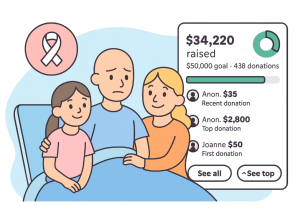
Why Relationships, Not RFPs, Still Decide Who Gets Funded
Every year, thousands of nonprofits pour their hearts into crafting proposals, often investing hundreds of hours per application, in the hope of securing the lifeline of a major grant. Yet behind the polished language of Request for Proposals (RFPs) and the rhetoric of equity, the playing field is far from level.
Our large-scale analysis of over 4,000 grant applications revealed something uncomfortable: who gets funded may depend less on what’s proposed and more on how it’s written, and who already knows how to speak the funder’s language.
The Data Don’t Lie: Style Over Substance
Our team applied natural language processing (NLP) to thousands of real grant narratives. Their goal was simple: could a machine predict which proposals got funded based solely on their content?
It couldn’t.
Even with thousands of applications and advanced models, the algorithms failed to predict which organizations were funded. That’s not a technical glitch, it’s a signal. If machines can’t find consistent patterns, it means funders themselves aren’t using consistent, transparent criteria.
Instead, reviewers seemed to be slightly swayed by the linguistic style and tone. Funded proposals employed more abstract, systems-level language: phrases such as “cross-sector collaboration,” “data-driven strategy,” or “innovation platform.” Meanwhile, proposals rooted in community voice or direct service, using phrases such as “support group,” “school health program,” or “local outreach,” were consistently overlooked.
That gap between stated values and actual funding decisions exposes philanthropy’s quiet bias: a preference for professional polish over community authenticity.
The Capacity Paradox
The problem runs deeper than language. Wealthier, urban-based nonprofits can afford professional grantwriters and polished communications teams. Grassroots and BIPOC-led organizations, often the very ones most aligned with equity missions, rarely can.
This creates what researchers call the capacity paradox: funders claim to support emerging or community-led initiatives, but their review systems reward the organizations that already have the resources to compete.
Without structural change, this cycle perpetuates inequality: grant after grant.
Relationships Still Rule
So what actually predicts success? Increasingly, it’s relationships, not RFPs.
Foundations may issue public calls for proposals, but seasoned applicants know that real access happens through pre-existing networks. People who’ve met the program officers, sat on advisory boards, or previously received funding.
That’s why even the most innovative, equity-driven ideas often never make it past the first round: they weren’t written in the funder’s dialect, and they weren’t written by someone in the room.
It’s a system that rewards those already inside and leaves everyone else guessing.
Why AI Belongs in the Future of Funding
Enter FindGrant.ai—an equity-driven solution built to decode and disrupt this opaque process.
By combining data science, AI-powered matching, and plain-language transparency, FindGrant.ai helps nonprofits identify funders whose actual giving patterns, not just their mission statements, align with their work. It also helps funders reflect on whether their review processes reinforce hidden inequities.
Where traditional RFPs filter out new voices, AI can surface who’s missing and why.
Imagine if every nonprofit, regardless of size or budget, could access insights once reserved for large institutions:
- Which foundations fund similar organizations nearby
- How proposal language shapes perception
- What kinds of partnerships tend to succeed
- How funding priorities actually evolve over time
That’s the vision behind FindGrant.ai: to democratize the grantseeking process, not just digitize it.
From Gatekeeping to Guidance
The solution isn’t to replace human judgment; it’s to make it fairer and more transparent. Tools like NLP can serve as equity audits, helping funders determine whether their practices align with their stated values.
But equally important is rebuilding trust and access, making it easier for community-based organizations to find, understand, and connect with the right funders before they ever hit “submit.”
That’s what FindGrant.ai is designed to do:
✅ Map relationships across the funding ecosystem
✅ Reveal unspoken norms and linguistic barriers
✅ Equip nonprofits with real data on funder behavior
✅ Help funders live up to their equity commitments
A More Transparent Future
The irony of philanthropy today is that while nearly every foundation speaks of equity, few operate transparently enough to achieve it.
If equity is the goal, relationships can’t remain private currency. If fairness is the promise, evaluation criteria can’t stay hidden. And if innovation is the mission, technology must serve everyone—not just the insiders who already know how to play the game.
FindGrant.ai exists to bridge that gap—by making invisible rules visible, and giving every organization a fair shot at funding that fits.



